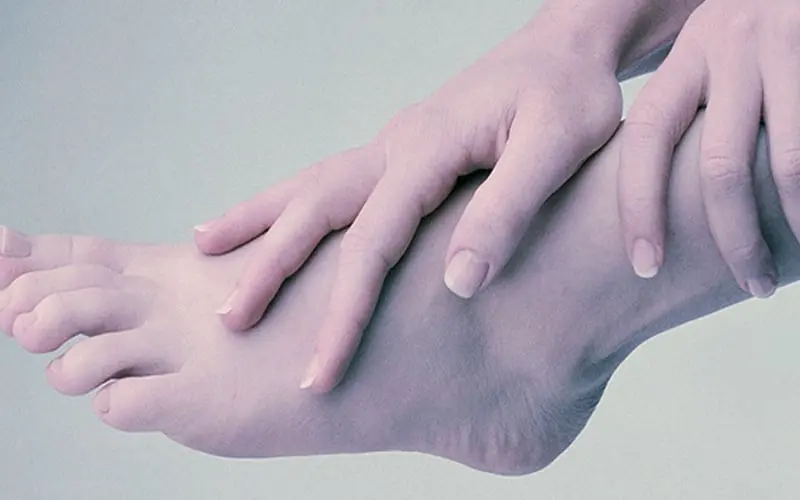Acupuncture for Peripheral Neuropathy
Evidence-Based Treatment Guide
Peripheral neuropathy affects millions of people worldwide,
often developing as a side effect of medical treatments such as chemotherapy,
or as a complication of conditions like diabetes.
Research consistently demonstrates that acupuncture can be beneficial,
reducing pain and improving quality of life for those experiencing neuropathic symptoms.

What is Peripheral Neuropathy?
Peripheral neuropathy occurs when nerves in the body's extremities—such as the hands, feet, and arms—become damaged. Symptoms vary depending on which specific nerves are affected and can significantly impact daily functioning.
Current statistics reveal that peripheral neuropathy is a widespread condition:
- In the UK, approximately 1 in 10 people aged 55 or over are affected by peripheral neuropathy
- Overall population prevalence ranges from 1% to 7%, with significantly higher rates among those over 50 years
- Among diabetic populations, prevalence ranges from 6% to 51%, depending on factors such as age, duration of diabetes, and glucose control
Common Symptoms
The main symptoms of peripheral neuropathy typically include:
- Numbness and tingling in the feet or hands
- Burning, stabbing, or shooting pain in affected areas
- Loss of balance and coordination
- Muscle weakness, especially in the feet
- Reduced sensitivity to temperature and touch
These symptoms may be constant or intermittent, and their severity can vary significantly between individuals.
Current Research Evidence
Recent systematic reviews and meta-analyses have provided robust evidence for acupuncture's effectiveness in treating peripheral neuropathy:
Chemotherapy-Induced Peripheral Neuropathy (CIPN): A 2024 meta-analysis examining acupuncture treatment for CIPN found significant improvements in both pain management and functional quality of life. The research revealed that acupuncture demonstrated consistent efficacy with minimal adverse effects, reinforcing findings from earlier studies including the 2019 systematic review that identified only one mild adverse event across multiple trials.
Diabetic Peripheral Neuropathy: Multiple 2024 systematic reviews focusing specifically on diabetic peripheral neuropathy have shown that acupuncture significantly reduces pain scores and improves neurological function. These studies consistently report that acupuncture is now considered a component of integrative treatment approaches for diabetic neuropathy.
Safety Profile: Across all recent studies, acupuncture maintains an excellent safety profile with few and minor associated adverse effects, making it a low-risk treatment option for patients who may already be managing multiple medical conditions.
How Acupuncture Works for Peripheral Neuropathy
Traditional Chinese Medicine Framework
Chinese medicine theory explains that blood and vital fluids travel through the body via pathways called jingluo (經絡), which translates to "Channels and Network Vessels." From this perspective, neuropathic symptoms represent disruptions within the physiology and circulation of these channels, which may originate from physical, psychological, or emotional factors.
Modern Understanding
Contemporary research suggests that acupuncture works through multiple mechanisms:
- Stimulating the release of endorphins and other natural pain-relieving substances
- Modulating nerve signal transmission
- Improving local blood circulation
- Reducing inflammation around damaged nerves
- Activating the body's natural healing responses
Initial Assessment
During your initial consultation and treatment, we conduct a comprehensive evaluation that includes:
- Detailed review of past and present medical history
- Discussion of specific neuropathic symptoms
- Traditional Chinese medicine diagnostic techniques including:
- Channel palpation to assess circualtion of blood and fluid
- Pulse diagnosis to evaluate systemic health
- Tongue examination for additional diagnostic information
This integrated approach helps identify the underlying causes of nerve inflammation and develop an individualised treatment strategy.
Needle Placement
Treatment typically involves two types of acupuncture points:
Distal Points:
- Located on arms and legs, below the elbows and knees
- Influence overall circulation through the Channel and Network Vessel system
- Help regulate systemic nerve function and pain perception
Local Points:
- Positioned around the specific areas of neuropathy
- Target local circulation and nerve inflammation
- Provide direct therapeutic effect to affected regions
All needle placements are discussed with patients beforehand to ensure comfort and understanding of the treatment approach.
Safety and Considerations
Acupuncture for peripheral neuropathy has demonstrated exceptional safety in clinical trials, with adverse events being rare and generally minor when they do occur. The treatment is suitable for most patients, including those undergoing other medical treatments such as chemotherapy or diabetes management.
 About Rick Mudie
About Rick Mudie
BSc (Hons), BSc (Oriental Med), MBAcC
Rick is a traditional Chinese acupuncturist with over 25 years clinical experience.
He has a BSc degree from Edinburgh University, were he studied Psychology and Anthropology and a BSc (Hons) in Oriental Medicine from Brighton University from it's affiliated college 'The International College of Oriental Medicine' (ICOM), the UK's oldest acupuncture college.
He is currently a Lecturer at ICOM, where he was a Course Leader & Clinical Supervisor for many years. He is an experienced member of the British Acupuncture Council (BAcC).
Read more about Rick.


